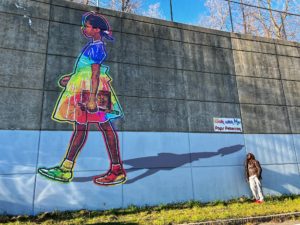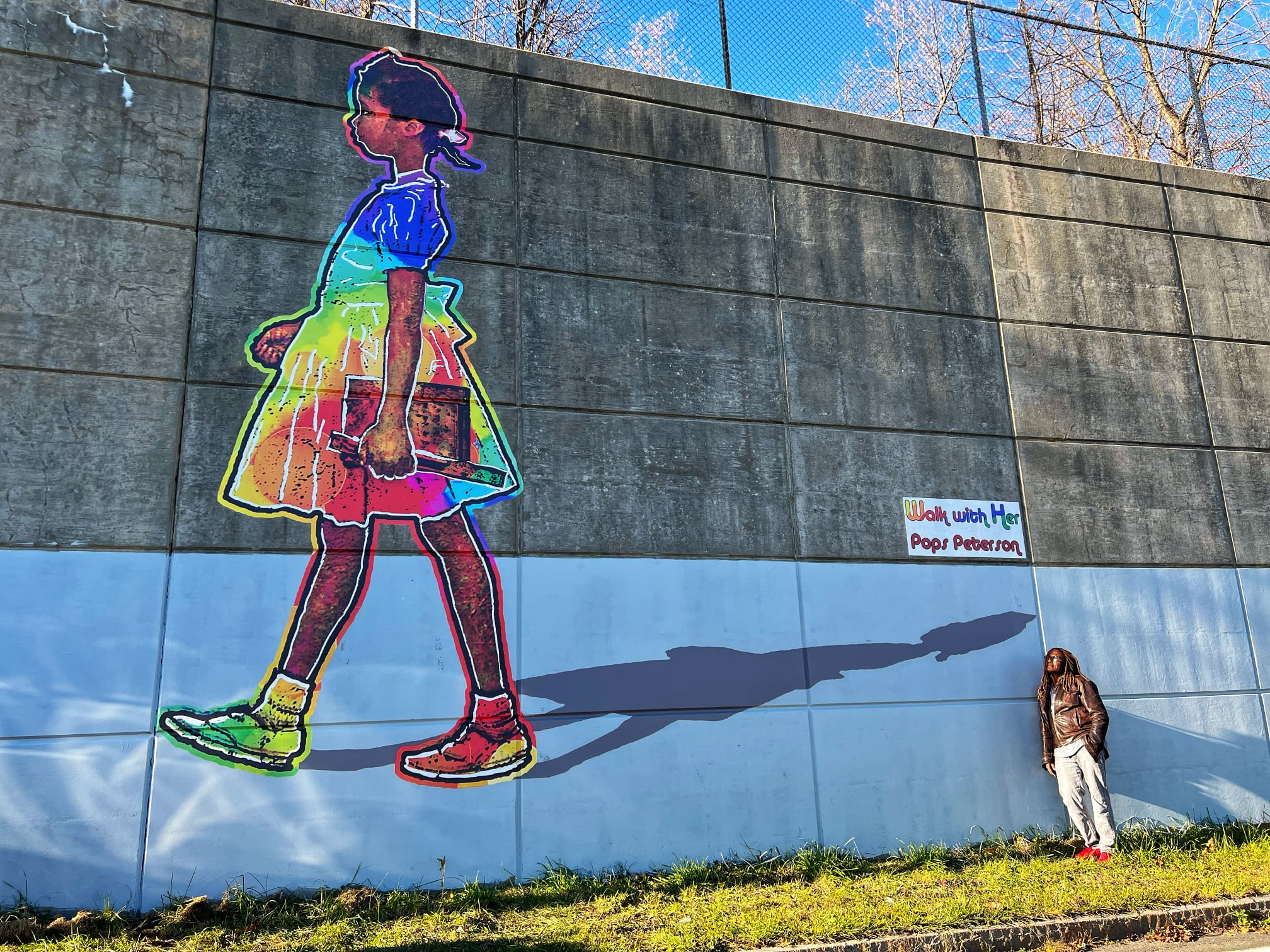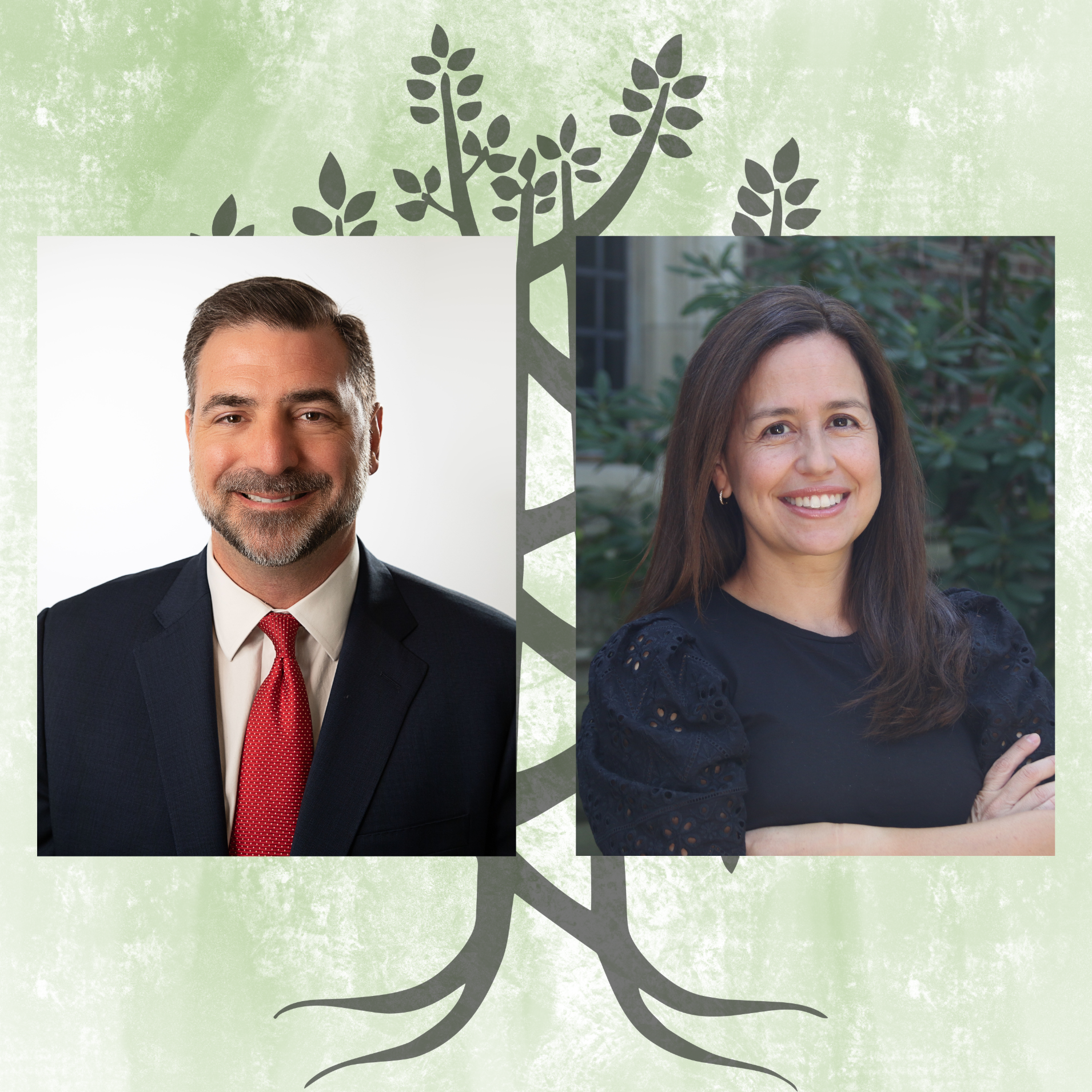
As we commemorate the legacy of Dr. Martin Luther King, Jr., the TBE Racial Justice Initiative hosts a special program featuring “Pops” Peterson and his exquisite art. On the 75th anniversary of Norman Rockwell’s iconic 1943 “Four Freedoms” series, a national exhibition tour also included a companion exhibit, “The Four Freedoms Reimagined.” Pops was one of 39 world-wide artists recognized for his interpretation of the “Four Freedoms Reimagined”, continuing his decade-long reinventing of Norman Rockwell’s famous images. Pops was one of 39 international artists chosen for a national tour of his interpretation of the “Four Freedoms Reimagined, ” continuing his decade-long reinventing of Rockwell’s famous images. At the Denver Art Museum, however, Pops’ “Freedom from What,” was the only contemporary painting presented in the show. When the tour arrived at its final destination, The Norman Rockwell Museum, Pops was given a solo exhibition featuring thirteen of his Rockwell-inspired canvases, which became the longest running solo show in the museum’s history. A combination of photography and digital painting techniques lends itself to powerful portraits that Pops will share with us (among other works also!). This evening will be a tribute to the shared values espoused by Dr. King and Judaism: justice, equality, human dignity, and b’tzelem Elohim, “in the image of God.”
We interviewed Pops Peterson to learn more about his artwork, from the experiences that shape his artistic approach to the role of his art in the context of racial justice and civil rights.
TBE: What made reimagining The Four Freedoms a project that you wanted to take on?
PP: I just wanted to have some fun and maybe sell some canvases. When I first had the idea to go around Stockbridge and walk in Rockwell’s shoes, I wasn’t really aware of his Four Freedoms as a collection, although I did know the paintings individually. I simply thought it would be cool to take these iconic works, created in my home town decades before, and recreate them to show how the world had changed. “Freedom from Fear” and “Freedom from Want,” were at the top my list, and there were other favorites I had in mind. But when I learned there was a “fab four,” I made it a priority to show all four of Rockwell’s freedoms through my lens. It never occurred to me that I would strike such a chord with the public and civil rights community, and certainly never expected the national headlines.
TBE: How does your experience as a journalist inform your artwork?
PP: In my years as a journalist my goal was to share what I witnessed in the world with my readers and record it for posterity. In my early years as an artist, however, I felt my goal was to distract people from reality, to entertain by bringing them beauty and joy. My “Reinventing Rockwell” series was first time I’d combined these two goals of entertaining and reporting. This is how I discovered the true power of art. Beauty and joy, as well as pain and sadness, are emotions that are only intensified when used as a channel to relay one’s truth, especially the inner, hidden truth that eludes spoken language.
TBE: In the process of creating the reimagined Rockwell pieces, were there challenges you anticipated—or challenges you didn’t anticipate?
PP: I was deeply concerned that my photo-paintings might not equal the artistry of such a technical genius, and that I would be able to capture the sensitivity and tenderness of Rockwell’s persona. Succeeding in this feat, as the public, press and art world have affirmed, is an accomplishment that still takes my own breath away. In fact, I lose myself inside each project so completely that, when I’m looking at the finished painting, I wonder how in the world it happened. Who did this?
What I didn’t anticipate was the resistance I encountered along the way from some public officials who were either opposed to the views I was expressing, or concerned that my project would somehow backfire in copyright infringement issues. However, the landslide of support from this wonderful community of the Berkshires soon buried these fears, and the legal issues were moot. As for the critics opposed to altering the classics, I’ve embraced the notion that my work would not be truly successful if I didn’t cause some controversy.
TBE: If you were to expand the project this year, what would you add?
PP: Walking in the shoes Norman Rockwell has taught me how to tell stories through my pictures with more power and grace than I ever imagined I’d achieve. Currently I’m applying these new skills to my own original compositions. I’ve created new works about gay families, the effects of the pandemic, the Women’s March, the disabled community and more. My next canvas will be about homelessness in our country. I’m also turning to other great artists for inspiration, including Edvard Munch and Gordon Parks.
TBE: How have you seen your artwork take on new or different meanings in the context of the nationwide conversation about racial justice in the years since you created these pieces?
PP: Yes, shockingly so. “Freedom from What?,” inspired by Rockwell’s “Freedom from Fear,” features a newspaper with the headline, “I Can’t Breathe,” the last words of Eric Garner, who was infamously murdered by the NYPD for selling loose cigarettes. Six years later, last August, I was told that my “Freedom from What?” had been selected from 1,000 entries to be featured at the Denver Art Museum. The very next week, the phrase “I Can’t Breathe” was back in the news as the last words of George Floyd, who had been murdered by the Minneapolis police for allegedly passing a counterfeited $20 bill. This is a sad, horrific coincidence that still makes me shudder and wonder if change will ever come.
TBE: As we commemorate the legacy of Dr. Martin Luther King, Jr., this year, what’s one thing you hope we’ll learn as a community from your artwork and from you?
PP: As an artist, all I ever wanted to do was to let the viewer see things from my point of view, and to feel what’s in my heart—so important, since people like me have so long been unseen and dismissed, as if our very existence was worthless and undesirable. Sharing our feelings, culture and knowledge is the only way to pierce through the walls of suspicion, fear and hate that separate and threaten our society. There is no one single thing I’m trying to teach, other than that there is a beating heart inside every human being, a heart just like yours.
Join us on Monday, January 17, 2022 at 7:00 pm for Portraits of Freedom: “Pops” Peterson’s Reimagining Rockwell.


